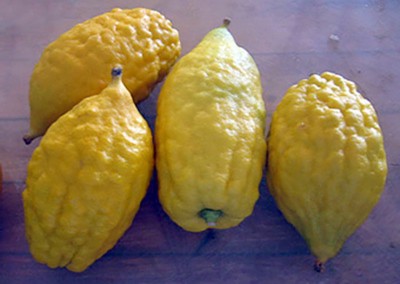
What should a person look for when purchasing an etrog? First, one should be careful to purchase etrogim from an orchard which maintains a tradition that their etrogim are not grafted, as almost all halachic authorities invalidate grafted etrogim. Regarding the etrog itself, it is crucial to understand what is law, and what is custom, as many are unnecessarily strict when choosing an etrog. While examining an etrog, one should take the etrog, and hold it at the distance at which he would hold a Sefer. He should turn the etrog slowly and look at the top third of the etrog. If there are no visible black spots, during the first time he turns the etrog, the etrog is valid. If one finds black spots on the top third of the etrog, even on the neck of the pitom, the etrog is pasul [disqualified]. If, however, a black spot is found on the wooden part of the pitom, or the oketz, or under the top third of etrog, it is not considered to be "hadar" and it is not valid. At times, there are brown spots or scabs on the etrog. The Mishna Berura refers to these scabs as "blettlach." The etrog is sometimes bruised while still on the tree, and a small, brown "scab" grows over the bruise. These blettlach are not a problem and the etrog is kosher. The Klausenberger Rebbe once said that there are four things in Judaism which are meant to be "complete": emuna shleima (belief), teshuva shleima (repentance), refuah shleima (good health), and geula shleima (redemption). He added that these four things are representing by the letters of the etrog: Emuna, Teshuva, Refua, and Geula. People strive to buy a perfect etrog, not only for the etrog’s sake but for the sake of what it represents.
By Rabbi Eli Mansour
How Does One Choose a Kosher Etrog?
Typography
- Smaller Small Medium Big Bigger
- Default Helvetica Segoe Georgia Times
- Reading Mode




